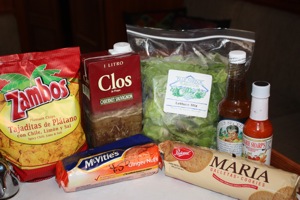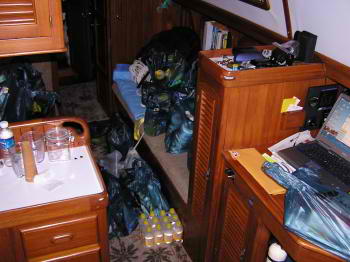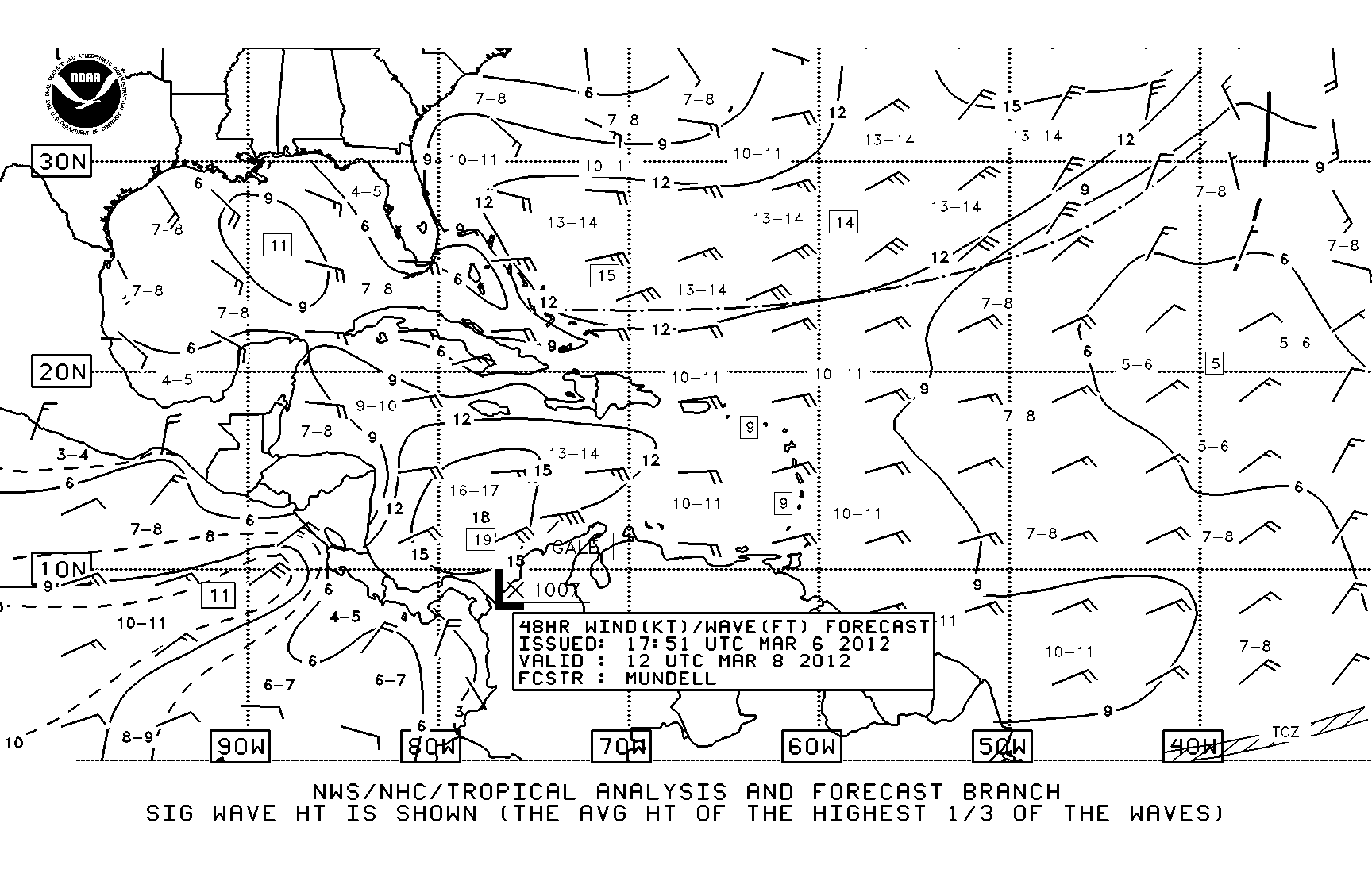Before I can even start provisioning for a 3 month long adventure, there are certain key steps that are almost necessities. If I skip the “pre” steps, invariably we end up either buying stuff locally at inflated prices OR eating the same thing over and over because I have way too much of one thing and not enough variety. SO, the cart was before the horse yesterday, but today we’ll switch them back. A caveat … we love to eat locally while we’re cruising — every time we’ve gone somewhere, we’ve discovered local favorites that we miss when we return to civilization. We already know that food prices in the Bahamas are around 100% inflated from US prices, so we’re trying really hard not to have to buy simple staples such as a can of beans or tuna while we’re gone. Another advantage is we won’t have to tote heavy cans back to the boat in the dinghy, although we remember from our charter in the Abacos that the Bahamian Kalik beer is tasty, so David’s taking one case of beer & we’ll end up toting some Kalik! 🙂 But on to the project at hand this gray & rainy Saturday morning:

Step One: Do a complete inventory of everything edible aboard (and some other categories such as paper products, health & beauty, cleaning supplies, etc). This is the only way to insure I won’t run out of cumin, garlic powder or whatever before our 13 weeks are done. This part is tricky because since we don’t leave any food on the boat when we leave for six months, we want to time it so that everything runs out on May 31 (approximately when we’ll put the boat away for the summer/hurricane season). Otherwise we end up giving or throwing away a lot of money in food items – canned & paper goods are the exception. In the past I’ve always used the Provisioning Spreadsheet from TheBoatGalley.com and that’s where I started again this year. But this year provisioning will be far simpler, so I copied & pasted & changed into a simple spreadsheet that doesn’t do any magic like Carolyn’s, but I also cannot erase formulas and screw it up. I’ll post my simplified provisioning inventory when I complete the process so everyone can see what’s aboard Winterlude when we leave.
Step Two: Now that I have an updated working inventory, we pre-plan over breakfast one morning. We’ll be gone approximately 90 days — 90 breakfasts, lunches and dinners, plus happy hour snacks and potluck foods. We plan to eat locally for at least 3 meals a week — whether it’s catching a fish, buying lobster from a local, exploring, provisioning, whatever, so that leaves 4 nights a week Lest you think I’m crazy, we don’t plan every meal for 3 months, we jot down a list of potential meals — I have a list of 10 dinners that we enjoy, including a couple that can be made with just canned stuff aboard if we run out of fresh stuff – rice n beans is a good example. If I have fresh peppers & spices, the rice n beans becomes even tastier, but without, I can make it with ground spices and Gourmet Garden Tube spices. And if we have fresh fish, it becomes a side dish, but without, it’s dinner.
Having never been to the Exumas we don’t know exactly what to expect in the way of fresh veggies provisioning and since we eat a LOT of fresh veggies, trying to anticipate meals that don’t use any is a challenge. A few of the dinners, such as Zucchini Skillet Supper (if we can find zucchini) and Garden Stew make enough for at least 2 meals, and often by changing them up just a bit – turning leftover zucchini skillet supper into a veggie pasta sauce for another night – I can stretch it for a 3rd night.
From the rough list of meals, we guess at how many times we might eat that particular meal — tacos is 3-4 times over 3 months just taking into account the fresh stuff we’ll need to make them and rice n beans is once a week — 13 meals — actually 26 because invariably we end up with leftovers. Good thing it’s tasty enough that we both love it! 🙂 Now I can estimate the quantities of everything I’ll need to make those 10 meals that many times.
Step Three: Create two shopping lists. The first list is simply all the non-perishables, the second, all the fresh foods – meats & veggies. Now we’re finally ready to go shopping! 🙂

If you’re doing this somewhere – like Panama – where it rains a lot, you may want to bring black plastic trash bags to cover the provisions on the way back to the boat. One year we had everything soaked as we transported it from the grocery van to the boat — just down the dock. Back in Florida we won’t have that problem because if it’s a total deluge, we’ll just leave the stuff in the car until it stops! 🙂
One more caveat: I’m sharing the provisioning process in hopes someone can use the information as a starting point, but please remember, David & I eat a bit differently. We’re not exactly vegetarians or vegans, but we eat minimal dairy, strive to eliminate fat and cholesterol (which translates to very little meat) ever since we learned of David’s heart blockage this past summer.
Moving right along … a new Trader Joe’s just opened about an hour south of us … we no longer have to stock up when we visit daughter Aly in Atlanta! So we’re off on a TJ’s excursion!
Anyone have tips on how you do your provisioning differently? Leave a comment and share! Cheers! Jan














Enjoyed your post very much 🙂 .
This post help me a lot. Hope to see your latest spread sheet for galley provisioning to a chartered vessel. Can you help me on the techniques of cost cutting on the provisioning for chartered vessel for 3 months with maximum of 15 crew